One thing thriving companies have discovered is that when you take care of your employees, they take care of your customers. The focus on the employee experience is even more important in times of economic uncertainty—turnover and disengagement cost the U.S. $450 billion to $550 billion in lost productivity per year.
Companies that put their employees first outperform their competitors in various key performance indicators, including profitability, productivity, and customer satisfaction. Such companies position themselves for long-term success and resilience in the face of market challenges.
An exceptional employee experience depends on effective communication at every step along the employee journey. The key is less volume, more relevancy. Less noise, more personalization.
When your communication strategy is aligned with the employee journey, you create a high-performance culture. That strategy starts by mapping key moments and milestones in each employee’s experience from recruitment to retirement.
In this blog post, we’ll cover key insights into how an employee journey map can help human resources and internal communications teams create a positive employee experience and drive organizational success. You’ll gain actionable insights to understand, implement, and optimize the employee journey mapping process within your company.
“The employee experience is directly related to customer experience. If employees perceive that the business cares about them, they’ll go the extra mile.”
Ryan Malkes, Senior Consultant, Services Innovation Director, Mercer
What is an employee journey map?
Employee journey maps are valuable tools for companies seeking to improve employee satisfaction and drive business success through a more engaged and productive workforce.
Journey maps are a visual representation of the employee life cycle and the various interactions workers have with the company. Throughout an employee’s journey, there are countless moments that affect how they feel about working for your company. Each of these moments, whether big or small, adds up to the fullness of their employee journey.
These employee journey stages encompass the moments that matter most—from the initial stages of the recruitment process until the day you conduct an exit interview. Similar to customer journey maps, which focus on the experiences of customers, employee journey maps focus on the various touchpoints and interactions that employees have with the organization, its policies, procedures, systems, and culture.
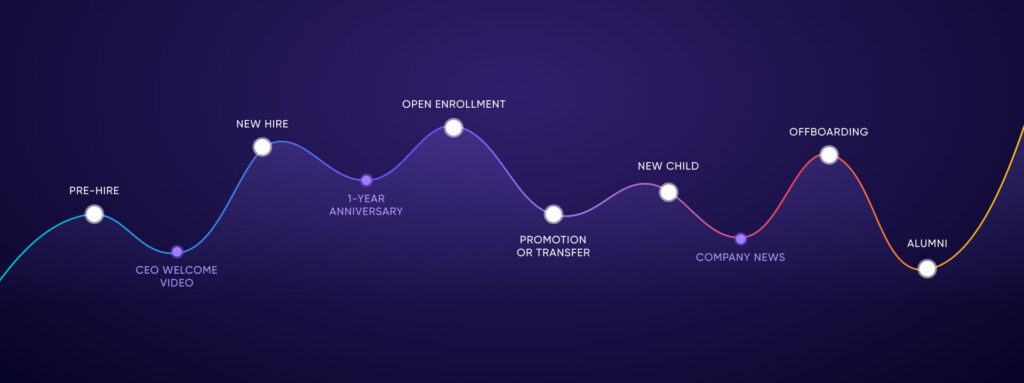
What is employee journey mapping?
Employee journey mapping is a design thinking process that helps organizations better understand the needs, motivations, and emotions of their employees at each stage of their journey.
The mapping process takes a holistic approach to identify key communications and technological systems relevant to each moment on the journey, as well as the tone and cadence of communications for a particular journey.
The purpose of employee experience journey mapping is to gain insights into the employee experience and identify pain points, areas for improvement, and opportunities to enhance engagement, satisfaction, and productivity.
When human resources and internal communications leaders create an employee journey map, they can design and implement strategies to foster a positive employee journey that supports the success and well-being of their workforce.
“Employee journey mapping is the process of understanding and learning from our employees so we can build meaningful relationships and compassionate solutions. That’s the real benefit of doing this work.”
Ryan Malkes, Senior Consultant, Services Innovation Director, Mercer
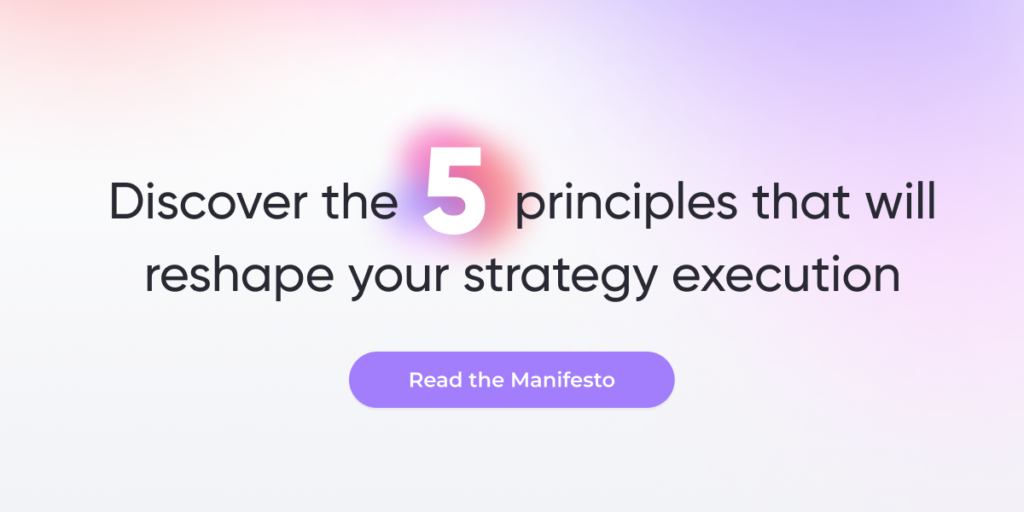
Benefits of employee journey mapping
The benefits of employee journey mapping are numerous. When you leverage employee journey mapping, you make an investment in the employee experience that reaps significant returns. Highly engaged employees stay with the company longer, contribute with greater levels of enthusiasm, and improve your brand reputation.
An effective employee journey map is a valuable asset for HR and internal communications teams seeking to identify pain points, increase employee satisfaction, enhance company culture, and drive business success through a more engaged and productive workforce.
Visit the Firstup EX Content Library for 125+ free templates, tips, and resources to create hyper-personalized journeys
By creating an employee experience journey map, you can:
1. Understand employee needs
By visualizing the employee journey from the onboarding stage for new employees through offboarding for former employees, organizations gain a deeper understanding of the needs, pain points, and preferences of their workforce. This insight into the entire employee life cycle allows you to tailor programs, policies, and initiatives to better meet those needs.
Only 25% of hybrid and remote knowledge workers feel connected to their organization’s culture.
Gartner
2. Identify pain points and opportunities for improvement
When you leverage employee journey mapping, you can identify areas where employees may encounter challenges, frustrations, or roadblocks that hinder their productivity. By pinpointing obstacles, organizations can take steps to address them.
A mere 12% of employees feel strongly that their company did an excellent job during their onboarding.
Gallup
3. Enhance employee engagement and satisfaction
By optimizing touchpoints throughout the employee experience journey, organizations can cultivate a more positive and engaging experience for employees. This, in turn, leads to higher levels of job satisfaction, increased morale, and improved retention.
94% of employees who receive effective communication, information, and guidance throughout their journeys are more likely to be highly engaged.
Forrester
4. Align HR processes and policies
Employee experience journey mapping helps HR leaders align their processes, policies, and practices with employee expectations. The process helps ensure consistency and coherence across various touchpoints to minimize discrepancies and maximize collaboration toward shared goals.
5. Increase performance and productivity
An employee experience journey map encompasses all the touchpoints and cross-functional contributors to each stage of the employee lifecycle. Strategic, personalized communication contributes to higher levels of employee engagement, motivation, and commitment.
Employee experience mapping helps organizations customize and refine how they reach and engage workers around the world. A more supportive and fulfilling work environment leads to better outcomes for employees and the organization as a whole.
Belonging drives engagement
5 key stages of employee journey mapping
Employee journey mapping is a design thinking process that produces a high-level view of the employee life cycle in order to craft a holistic approach to the employee experience. To create an employee journey map, this strategic endeavor requires careful planning and collaboration between HR, IT, internal comms, managers, and executives.
When you begin creating your journey maps:
1. Align a cross-functional team
Involve key stakeholders across departments—IT, HR, internal communications, and managers—who have a vested interest in improving employee experiences. Get buy-in from the C-suite by presenting how your goals will lead to positive business outcomes.
2. Create employee personas
Create fictional profiles to represent different segments of your workforce, such as new hires, remote workers, or frontline employees. Employee personas include different demographics, departments, roles, and communication preferences. When you take into account these differences, you can better understand the employee’s perspective on how and what you communicate.
Use tools such as whiteboards, sticky notes, or graphic design software such as Figma or Adobe Creative Suite to see at a glance the stages of the journey map. Visual representation fosters a holistic view of each touchpoint.
3. Conduct your journey mapping
Begin with business-critical moments such as the employee onboarding process, open enrollment, and performance reviews. Incorporate other key stages outlined above—manager development, celebrations and recognition, life events, and offboarding. Consider including costly events such as employee burnout and other contributors to attrition.
4. Chart your communication cadence
Identify key messages and communications for employees at each stage of the journey. Spreadsheets and workbooks work well for this process. Each stage of the employee journey includes a cadence of messages and relevant content, which should be customized according to your employee personas. Access an EX content library to kick-start your content creation.
5. Evaluate and enhance through data-driven insights
Employee experience journey mapping is a dynamic and ongoing process informed by quantitative data, employee feedback, employee needs, and organizational changes. When measuring the effectiveness of your journeys, leverage a blend of data analytics, pulse polls, surveys, focus groups, and comprehensive reporting. This multifaceted approach ensures a nuanced understanding of the effectiveness of your journey strategies.
Ready to get started mapping the employee journey?
Check out 5 steps to creating an employee journey map
Types of employee journeys
A journey map is a visual representation of the employee life cycle and the various interactions workers have with the company, from reading the job description through the hiring stage through professional development and beyond. They chart key moments, from employee onboarding to professional development to promotions, as well as significant milestones in employees’ personal and professional lives.
Typically, an employee journey map consists of different journey stages, including:
1. Onboarding
The hiring stage is often the first opportunity to showcase your company’s values to new hires. The way HR teams approach the entire hiring process—from job postings to candidate interviews—can affect a potential employee’s perception of the company.
Starting a new job can be daunting. Communication from the moment a new employee accepts the job offer can make or break the new hire experience. Your processes and communication during the preboarding and onboarding stage may be the reason a new team member decides to leave after the first year—or worse, the first 90 days after accepting the job offer.
The average U.S. employer spends $4,000 and 24 days to hire a new employee. (Glassdoor) Make the most of your investment with a personalized onboarding process.
2. Open enrollment
An effective open enrollment process is important for both the employee and their employer. All too often, however, open enrollment communication falters.
Researchers from Carnegie Mellon University surveyed nearly 24,000 employees at a Fortune 100 company and found that more than 60% chose plans that ended up costing them more than necessary due to a lack of understanding.
Insufficient HR communication hurts employee experiences. By establishing a cadence of communication, your organization can save money and add value for workers.
3. Performance
One of the cyclical stages of the employee journey, the performance process encompasses opportunities for employee development, learning, training, career advancement, and performance management.
To set up employees for success in their roles, their overall goals need to ladder up to the organization’s mission. Strategic misalignment between organizational structure and business objectives can cost a company 25% of its revenue. Once leaders align on market strategy, they must then ensure their goals cascade to every employee to steer the organization in a cohesive direction.
An employee experience journey map includes touchpoints for employee and manager annual performance goals, quarterly reminders, and reviews.
4. Promotions
Manager development is central to building an effective workforce. Training new managers and upskilling existing ones helps ensure their teams are well supported, motivated, and productive.
Considering 80% of the world’s workforce—and 60% of the U.S. workforce—are deskless, frontline managers are the primary gateways for company communication and training. Manager development impacts engagement, productivity, and innovation—all of which contribute to business objectives.
76% of employees are more likely to stay with a company that offers ongoing training.
SHRM
5. Celebrations
An important part of employee journey mapping includes acknowledging employees for their contributions, achievements, and milestones.
Recognition has a measurable effect on retention and engagement. Research shows that almost half of surveyed respondents left a job because they felt unappreciated. On the other hand, recognition increases engagement—65% of respondents said they would work harder if management noticed their efforts.
Recognition extends beyond kudos to congratulations. Consider the positive cultural impact of observing birthdays and work anniversaries, as well as diverse holidays around the world.
6. Life events
An effective journey map also includes the unexpected personal moments of an employee’s life. Significant shifts in employees’ lives—leaves of absence, marriage or divorce, relocation, or having a child—have direct correlations to HR functions such as updating information in ADP or Workday or adding a dependent to an insurance plan.
The employee experience is adversely affected by gaps or failures in HR communications around these important moments. By organizing HR communication strategies around the entire employee journey, you can increase employee engagement, productivity, and overall employee satisfaction.
7. Offboarding
An employee’s experience throughout their journey—from the onboarding process to the end of their tenure—can have a significant effect on retention and your brand reputation. The offboarding stage involves processes related to career transitions within the organization or exiting the company, including resignation, retirement, or termination.
By mapping out these stages and identifying key touchpoints, organizations can identify areas of strength and areas for improvement in the employee experience
For free templates, tips, and resources on creating hyper-personalized journeys, check out the Firstup EX Content Library
Journey mapping best practices
As you implement and iterate the employee journey mapping process:
1. Take an employee-centric approach
Put the needs and expectations of your workforce front and center. By understanding what matters to them in their employee experience, you can craft a tailored journey map along with personalized communication sequences that provide the most relevant information and best address their concerns.
2. Use technology for personalized communication at scale
More communication is less effective than timely, relevant, personalized communication that unites employees on a local, regional, and global level. Enterprises need the right platforms to reach and engage their diverse, dispersed workforces with personalized communication at the right time and on the right channels, whether that’s through email, intranet, digital signage, mobile apps, or platforms such as Salesforce and Microsoft Teams.
3. Leverage data to evaluate effectiveness
Once you’ve mapped out the employee journey, the next step is to seek feedback and capture real-time data to measure its impact and effectiveness.
Collect a blend of qualitative and quantitative data through employee feedback in the form of employee engagement surveys, pulse polls, HR systems analytics, and behavioral engagement data from your communications platform.
What do workers have to say about the employee experience at your company in the employee surveys? Are they frustrated, extremely satisfied, or somewhere in between? An employee journey map that addresses gaps and weak spots revealed by employee feedback will shore up your approach to engaging and communicating with your workforce.
Pulse polls and communications engagement data provide essential real-time feedback that captures employee sentiment at a given point in time—allowing HR leaders to respond swiftly to any issues or roadblocks.
4. Look for patterns and trends
Identify areas where different employee groups feel frustrated or unsupported at particular stages of the employee experience journey. The Firstup intelligent communication platform aggregates and analyzes employee behavioral data that provides key insights on communication engagement. Map out interventions to enhance each employee’s experience and keep employees engaged.
5. Review and refine your journey maps
Use the valuable insights gained from data analytics to improve your employee journey mapping and communication processes. Make adjustments based on evolving employee needs and organizational developments.
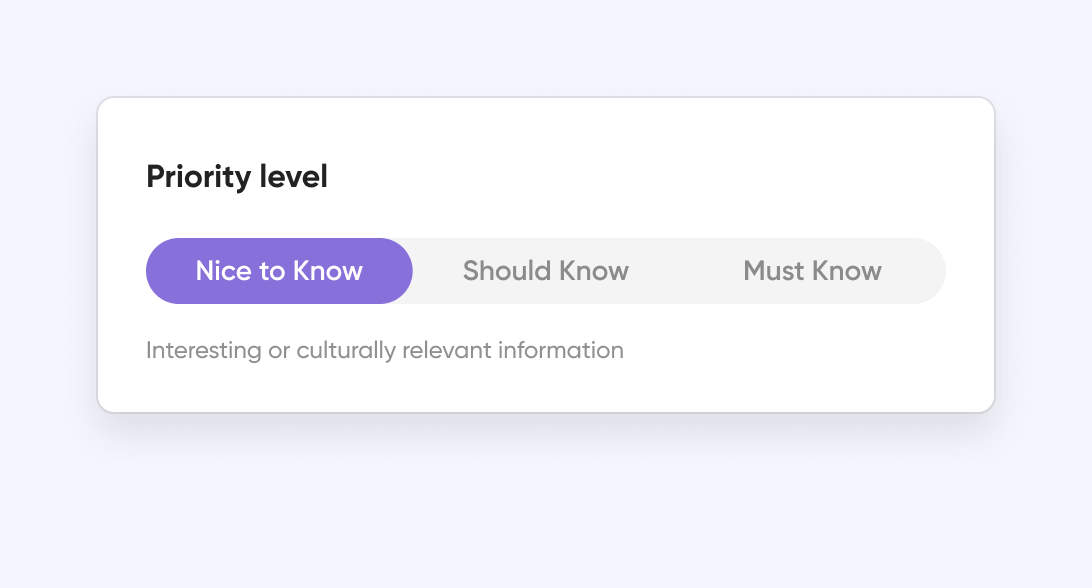
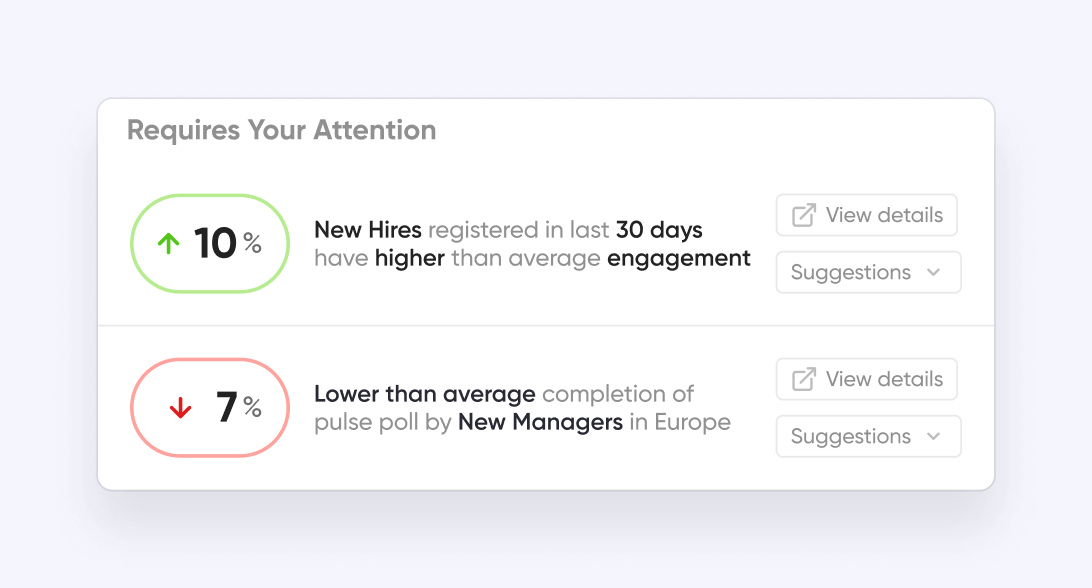
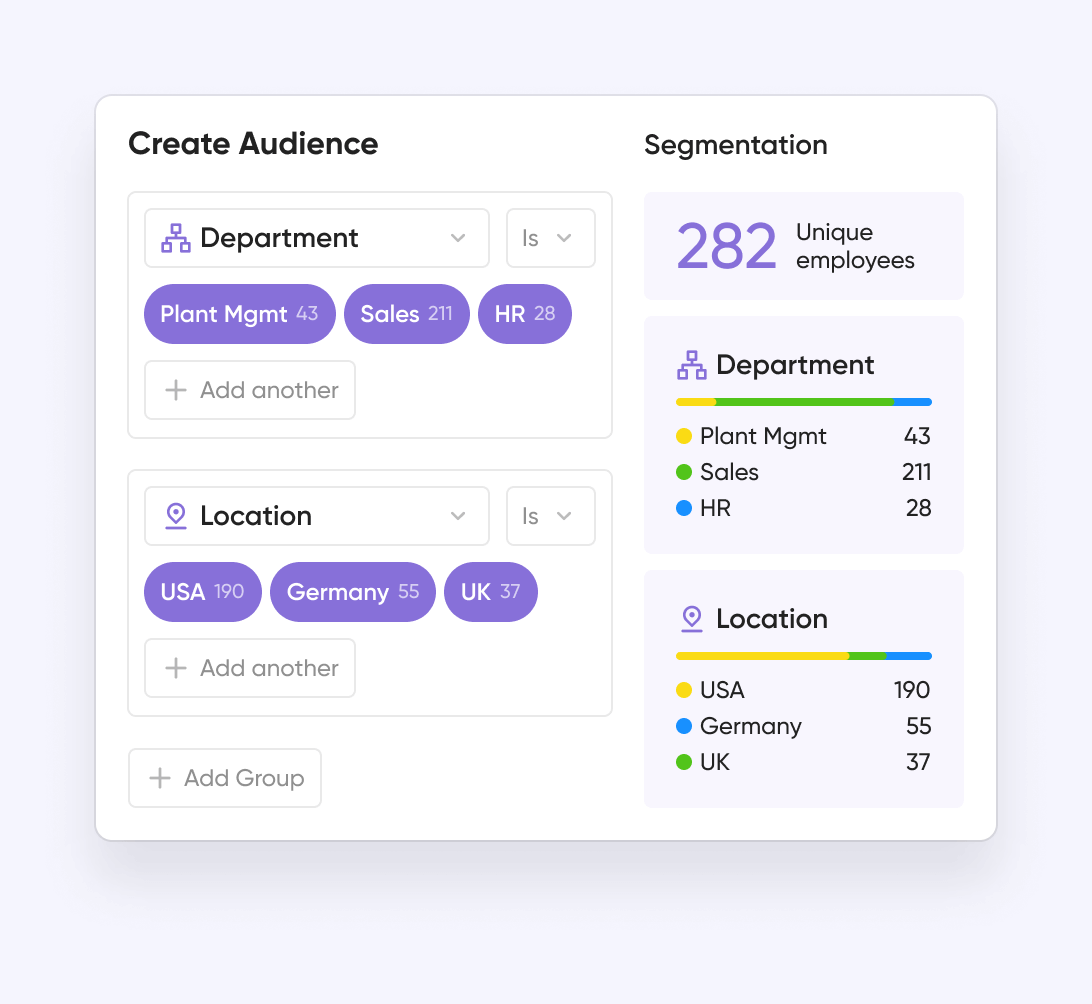
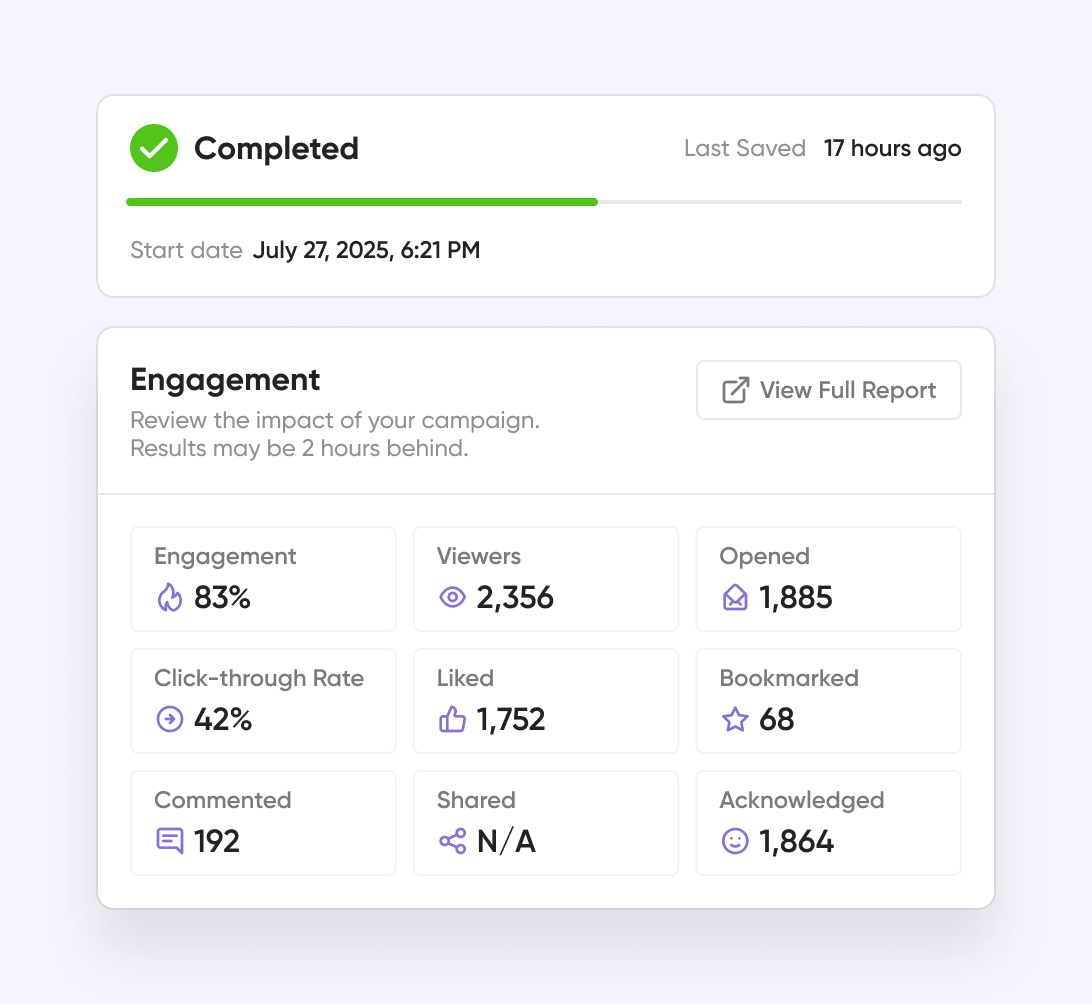
Leverage the right employee journey communication platform
Studies show that two-thirds of CHROs plan to invest in digital transformation for HR functions and communication. Connecting and engaging workers is crucial to the employee experience—and ultimately retention—which means HR leaders need the right tech stack to engage the entire company from C-suite to shop floor.
Firstup partners with national and global brands to connect HR and internal comms teams to their workforce—and provide workers everywhere ready access to the information and resources they need.

Brittany Barhite
VP Comms & Brand Experience, Firstup
HR, IT, and comms leaders who engage an intelligent communication system like Firstup can:
1. Automate and personalize communications
Ensure communication about open enrollment, employee assistance programs, security training, and other essential information reaches your workforce. HR and internal comms teams can save countless hours creating, customizing, and sending content, while ensuring every piece of information reaches the right people when and where they need it.
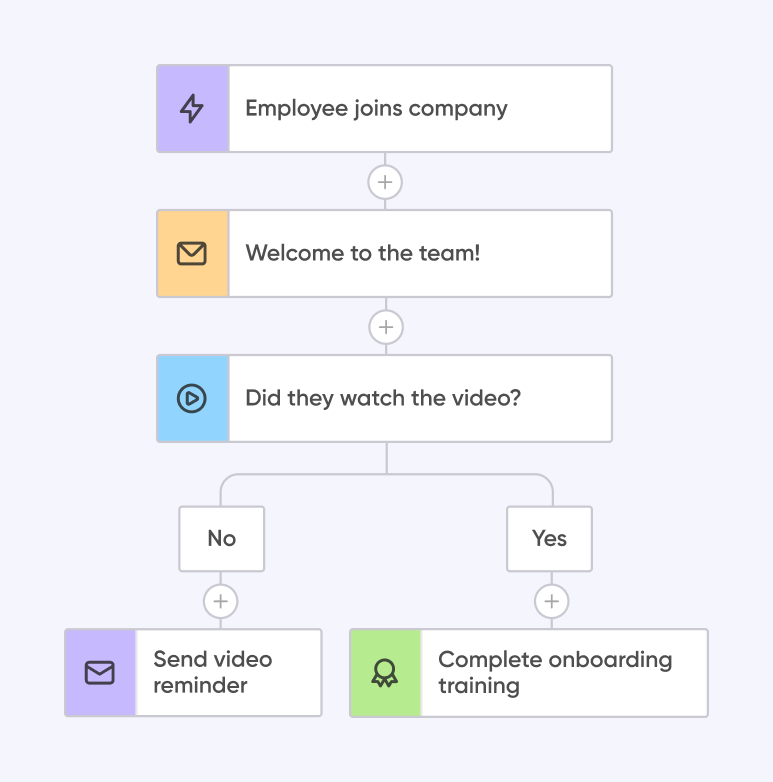
2. Connect and engage every worker
The right communications platform will reach everyone—from frontline to in-office employees around the world. Frontline employees typically don’t have a work email address—or access to a computer if they do have email. To reach these unwired employees as effectively as their desk-based counterparts, HR and internal comms teams can send push notifications through a mobile app.
“As a leader of frontline employees, when it came to accessible technology, I always had a mobile-first mindset. That was the initial step, reinforced by on-site messaging.”
Sejal Patel Daswani, CHRO and Tech Advisor
3. Align company initiatives
Communicate company objectives to employees effectively. Managers can help employees set goals that cascade up to their department’s function and its role in serving the company mission. This alignment ensures everyone understands their priorities and how they’re contributing to the company’s success.
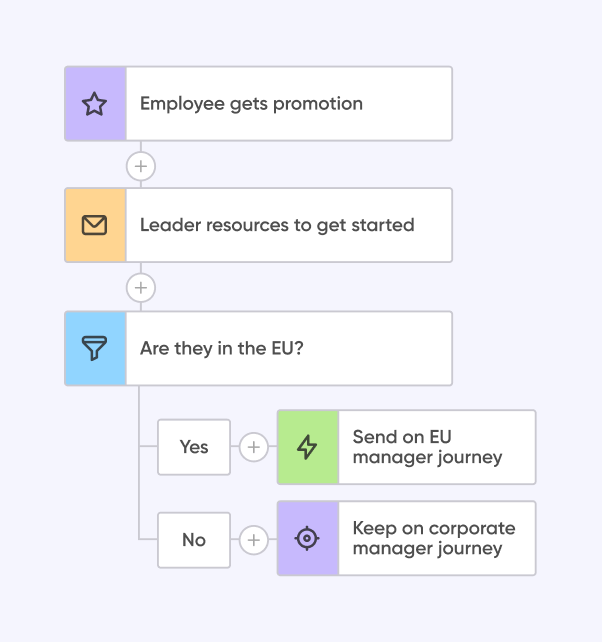
4. Identify pain points
The right communication platform will help leaders figure out where employees encounter inefficiencies or frustrations that hinder their performance. The Firstup platform offers behavioral and communication engagement data at a glance that can help organizations quickly pinpoint and address these issues.
5. Increase productivity
Around the world, almost 350 billion emails are sent every day. Experts agree that the average office worker receives more than 150 business-related emails—not to mention the countless pings and notifications from other applications and systems. The right employee journey automation platforms will cut down the digital noise so your workforce can focus on the task at hand.
6. Enhance your employer brand
Truly connecting with your audience—key to cultivating engagement—means your messages need to stand out, be memorable, and get to the point. You want them to be eye-catching and enjoyable to read, while remaining lockstep with your brand guidelines. The Firstup Creator Studio is fully equipped with intuitive, easy-to-use features for communicators to craft beautifully designed campaigns.
7. Drive organizational change
An intelligent communication platform like Firstup enables HR and internal communication teams to establish a two-way dialog between the CEO and other executives and the rest of the workforce. This level of engagement improves company culture and encourages innovation.
“Processes generate data, but journeys generate feeling. I need data, but I also want to measure and understand how people feel to make sure I’m driving that experience equation.”
Jason Averbook, Senior Partner and Global Leader of Digital HR Strategy, Mercer | Leapgen
Personalize the employee journey at scale
Employee experience journey mapping not only fosters a pleasant workplace—it also bolsters your company’s reputation and drives tangible business outcomes.
A positive employee experience fosters a thriving work environment where employees feel valued, supported, and motivated. And when your employees are happy, they promote your brand and give your company an edge on attracting great talent.
Employee journey maps are catalysts for organizational transformation. Journey mapping enables leaders to reach every worker with highly personalized communication, as well as identify areas for improvement so they can craft more effective engagement strategies.
The Firstup intelligent communication platform empowers HR teams to deliver personalized, relevant, and engaging campaigns at every stage of the employee journey. Real-time employee behavioral data provides insights into which workers are less engaged so managers can intervene before it’s too late. Customized communication and delivery cuts through the noise, improves the employee experience, and boosts engagement.











